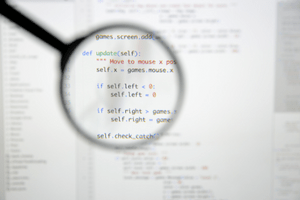Python functions are logically grouped, self-contained blocks that have reusable and organized codes to carry out a solitary task or related set of tasks. Functions in Python are important to build better modularity for applications that reuse a high degree of coding. You’ll need functions to steer clear of the same set of codes again and again because, with the increase in your code’s length, its reusability will decrease. By using Functions In Python, you can boost program readability, evade repetition of codes, alter a program easily, break up a complex process into simpler and smaller steps, and decrease the chances of error.
Categories of Python functions
There are two broad categories of Python functions, namely:
Pre-defined or built-in functions
These are the Python functions like print (), type(), id (),etc. that are already defined by Python.
Def function_name (Parameter):
Customized or user-defined functions
These Python functions are defined by the users to shun repetition of code and ensure simplicity.
The syntax for defining such a function is:
“Doc String”
Body
Return value
It’s essential to use the def keyword here as it informs Python that a function has been defined with the return being optional. Let’s consider an example to understand how it works.
Def wish() :
print(“Good Morning”)
Thus, the function can now be called as:
wish()
Every instance you use it, “Good Morning” will get printed.
Most-used Python functions
Here are some of the most-used built-in Python functions:
print()
You can use it to print to the standard output device.
Here’s the syntax of this function:
print(value, …, sep=’ ‘, end=’\n’, file=sys.stdout, flush=False)
In the print syntax above, sep can be a string that you want to put in between values or for defaults to space. Thus, if you put a list of words inside the print function, the separator would add a blank space between each word by default. This means for
print(‘Magnimind’, ‘online’, ‘python’, ‘course’, ‘in’, ‘Silicon’, ‘Valley’)
the print result would be
Magnimind online python course in Silicon Valley
abs()
This function is used when you want to find the absolute value of objects that are all numeric (e.g. a floating point number or an integer). It’s important to note that this in-built Python function gives a positive value of any number. This means any negative number will be converted into a positive number while the positive numbers would remain unchanged.
Here’s a look at the syntax of this function:
DataFrame.abs()
map()
This is one of the frequently used Python functions, which is perhaps the most readable and cleanest way to apply some kind of operation to your data. You can use it to apply a function to a series of components like a dictionary or list.
Its syntax is:
map(function, iterable, …)
Conclusion
Some other popular Python functions used often are type(), len(), sorted(), filter(), and zip(). By enrolling in an online python course in Silicon Valley for Python training, you can master the application of these functions quickly and efficiently.
By joining an online python course in Silicon Valley known for its effective Python training module, you can learn about Python functions and their applications quickly.






